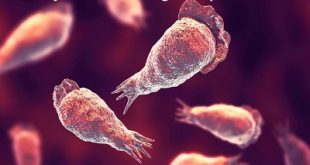What are pubic lice?
Pubic lice (also called crabs) are tiny insects which usually live in the pubic or genital area of humans. They are also sometimes found on other coarse body hair, such as hair on the legs, armpits, mustache, beard, eyebrows, or eyelashes. Pubic lice on the eyebrows or eyelashes of children or teens may be a sign of sexual exposure or abuse.
Crabs are parasites, and they need to feed on human blood to survive. They are one of the three types of lice that live on humans. The other two types are head lice and body lice. Each type of lice is different, and getting one type does not mean that you will get another type.
What Causes pubic lice (Transmission)?
- The source of infection for pubic lice is intimate contact with an infected person.
- Since transmission occurs during intimate contact, actual sexual intercourse is not necessary for the spread of pubic lice; however, they are not a sexually transmitted disease (STD).
- Pubic lice can also be transmitted by contact with contaminated belongings such as towels, bed sheets, or clothing.
- Crabs are transmitted through any intimate contact. Lice do not jump or fly, so actual contact is necessary for transmission. An individual may acquire an infection by sharing bedding or towels.
- Cats, dogs, and other pets are not involved in the spread of human lice. Your pet cannot become infected with human lice and transmit the lice to another person.
Risk factors
Risk factors for getting pubic lice include:
- Being sexually active
- Having more than one sex partner
- Having sexual relations with a person who has an infestation
- Sharing towels, bedding, or clothing
What are the symptoms of crabs?
Pubic lice symptoms often show up about five days after you get infested. Symptoms of crabs include:
- Pruritus (severe itching) in hairy areas, especially pubic hair.
- Specks of blood in your underwear.
- Small white dots on pubic hair that are hard to remove.
- Pale bluish spots on your thighs, buttocks and lower abdomen.
- Low fever and feeling run-down.
Complications of pubic lice
Sometimes a pubic lice infestation can lead to minor complications, such as skin or eye problems.
- Scratching can irritate your skin, or it could lead to an infection such as impetigo (a bacterial skin infection) or furunculosis (boils on the skin).
- Eye infections, such as conjunctivitis, and eye inflammation, such as blepharitis, can sometimes develop if your eyelashes have been infested with pubic lice.
- You may also have a mild fever or feel tired and run down.
- Seek medical advice if you have severe skin irritation or sore eyes.
Exams and Tests
Your health care provider will do an exam to look for:
- The lice
- Small gray-white oval eggs (nits) attached to the hair shafts in the outer genital area
- Scratch marks or signs of a skin infection
Because pubic lice may cause an eye infection in young children, eyelashes should be looked at with a high-powered magnifying glass. Sexual transmission, and potential sexual molestation, should always be considered if pubic lice are found in children.
Adult lice are easy to identify with a special magnifying device called a dermatoscope. Pubic lice are often referred to as “the crabs” because of their appearance.
Teenagers and adults with pubic lice may need to be tested for other sexually transmitted infections (STIs).
Treatment
There are a few different over-the-counter (OTC) pubic lice treatment options. These treatments are often the same as what you would choose to eradicate a case of head lice, and include products like Nix and Rid. But if these OTC options don’t work, a prescription may be in order.
Regardless, sex partners should also be treated. When using a topical treatment — OTC or otherwise — it will need to be applied to all areas of the body that may be involved, including near the rectum, thighs, lower abdomen, and underarms.
Finally, know that shaving won’t get rid of pubic lice.
Some treatments for pubic lice include:
- Over-the-Counter Lotions and Mousses These pubic lice–killing options contain either permethrin or a mix of pyrethrins and piperonyl butoxide. To use, wash and dry the pubic area, apply the medicine as directed, leave on for 10 minutes, then rinse out.
- Prescription Shampoo Even though lindane shampoos, such as Kwell and Thionex, kill both lice and nits, this is not considered a first-line treatment because it can be toxic — especially for those with a seizure disorder and for pregnant or breastfeeding women. Lindane is generally reserved for people who’ve experienced failure with, or cannot tolerate, another treatment.
- Petroleum Ointment If eyelashes or eyebrows are infested with pubic lice, use a cotton swab to apply prescription-grade petroleum jelly to them at night — and wash it off each morning — for 8 to 10 days. (OTC petrolatum jelly, like Vaseline, can irritate the eyes.)
After the initial lice treatment, there are still important steps to take to take to keep pubic lice at bay — and to relieve the itch:
- Nit-pick. After treatment, many nits will remain attached to the pubic hair shafts. These can be removed with fingernails or with a fine-toothed lice comb.
- Apply hydrocortisone cream. Itching may persist even after a successful eradication of pubic lice. If so, a hydrocortisone cream will help quell the itch.
- Wash clothing and bedding. Machine wash (at 130 degrees F or higher) any clothes, towels, and bed linens that the infested person used two to three days prior to treatment. Machine dry them at the hottest setting.
- Dry-clean or seal other items. Clothing and bedding that cannot be machine washed should either be taken to the dry cleaner or tightly sealed in a plastic bag for two weeks.
- Notify sex partners. Anyone who has had sexual contact (oral, anal, or vaginal) with the infested person within the previous month should be notified that they’re at risk for pubic lice.
- Avoid sexual contact. Do not engage in oral, anal, or vaginal sexual contact until the infestation has been successfully treated.
- Repeat treatment. If, within 9 to 10 days, live lice are still found, treat again.
Can you prevent Crabs?
- Crabs are usually spread by direct skin-to-skin intimate contact.
- Avoid contact with known infected people and textiles or clothing that may have been contaminated by someone who is infected with pubic lice.
- To avoid spreading the lice, a person with crabs should not have close or intimate contact with anyone else until the infestation has been fully treated.
- After treatment has been completed, ensure that all clothing and linens have been disinfected to avoid re-infection or spread of the infection to someone else in the home.
 Diseases Treatments Dictionary This is complete solution to read all diseases treatments Which covers Prevention, Causes, Symptoms, Medical Terms, Drugs, Prescription, Natural Remedies with cures and Treatments. Most of the common diseases were listed in names, split with categories.
Diseases Treatments Dictionary This is complete solution to read all diseases treatments Which covers Prevention, Causes, Symptoms, Medical Terms, Drugs, Prescription, Natural Remedies with cures and Treatments. Most of the common diseases were listed in names, split with categories.







